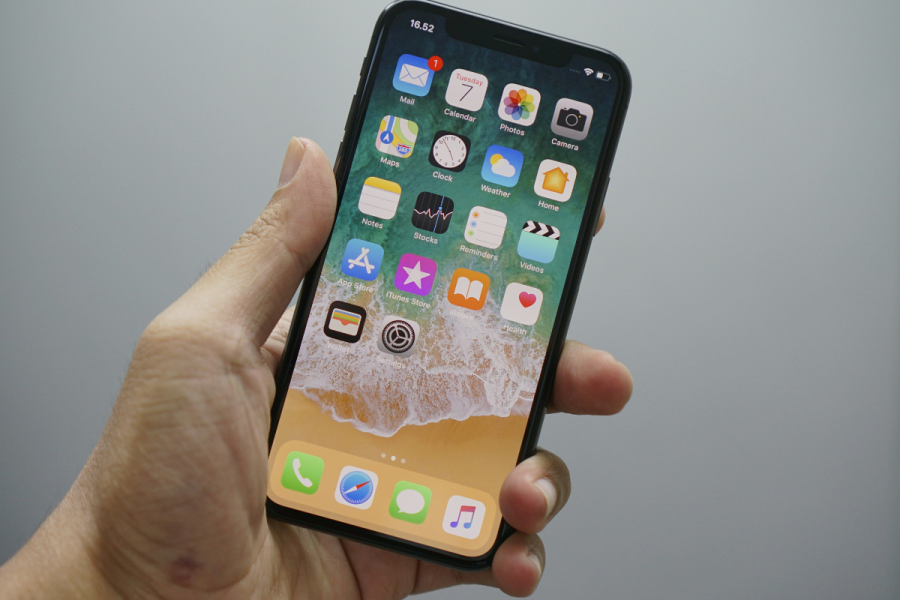According to an independent analysis performed by investment-watching blog 24/7 Wall St., Apple’s iTunes App Store has lost $450 million due to iPhone app piracy since it opened for business back in July of 2008. Although that number sounds high, they note it is small in comparison to the overall size of the App Store marketplace and the millions it generates in revenue each quarter – revenue that ranges from $60 million to $110 million according to previous estimates from a Bernstein analyst report cited in 24/7 Wall St.’s post.

However, in order to generate the $450 million figure, the author of the post uses some questionable back-of-the-envelope calculations that raise some flags. Our sources say that the real number is closer to $15 million to $20 million instead.
Piracy: Not Even a Big Issue
The reason why App Store piracy isn’t as rampant as it could be is simple: Most people don’t bother to jailbreak their iPhones, the first step to gaining access to tools that allow for pirated app downloads. However, keep in mind that jailbreaking isn’t done just for purpose of pirating applications. Thanks to a now-easier-than-ever process for jailbreaking, iPhone owners can choose from a number of software programs that automate the advanced hacking required to gain control over the device. Once jailbroken, you can install all sorts of unauthorized third-party applications to your phone via unofficial app store likes Cydia or Icy. Last year, we looked at a number of reasons why you would want to jailbreak by listing some of the better jailbroken apps, including one that turns your iPhone into a modem, a themeing app called Winterboard, and multiple apps that bring video to the video-less iPhone 3G. But let’s be honest. A good many jailbreakers are hacking their phones to gain access to apps they don’t want to pay for.
In October of 2009, mobile analytics firm Pinch Media dispelled some of the myths about App Store piracy. Most notably, they found that “try before you buy” as a reason for pirating apps was a myth. That’s referring to the claim made by the jailbreaking community that one of the main reasons they pirate apps are because the App Store doesn’t offer trial periods for paid applications. If the developers themselves don’t offer a free “lite” version of the app, there’s no way to tell if the app is going to be worth the price, claim the jailbreakers. But Pinch Media revealed this desire to demo apps was just an excuse. After tracking the jailbroken app ecosystem for many months, the company found that the conversion rate is only 0.43% for pirate-to-paid apps. In other words, the pirates aren’t trying and buying later. They’re just trying and trying and trying.
That can be bad news for some developers. 24/7 Wall St.’s report references developers like Neptune Interactive Inc. and Smells Like Donkey Inc. who each have apps with 90% piracy rates. Another developer, Web Scout Inc., sees a 75% piracy rate for a $.99 game and Fish Labs sees a 95% piracy rate for a $7 game. This seems to show that piracy rates increase with app prices. For example, notes the report, expensive apps like TomTom’s $79.99 GPS program and its Garmin counterpart are found all over file-sharing sites like thepiratebay.com.
However, piracy shouldn’t really be a major concern for developers, no matter what the rate. In fact, after the merger of mobile analytics firms Pinch Media and Flurry, they’re even considering doing away with the piracy-tracking feature due to lack of use among developers. Flurry’s VP of Marketing, Peter Farago, tells us that most of their customers (the developers using the service) are from developed economies like the U.S., Canada and Western Europe. It’s outside of these countries where the majority of piracy takes place, as they noted in a report last year. In these less developed economies, developers aren’t actually losing sales to pirates – those illegal downloads would have likely never been purchases anyway.
$450 Million?
The $450 million figure cited in the report was based on an average piracy rate of 75% per paid app – or three pirated downloads for every one. With 510 million paid app downloads, the number of pirated app downloads is 1.53 billion. With an average price of $3 per app, that would lead to $4.59 billion in losses for both developers and Apple combined. Since most pirates wouldn’t have paid for the apps anyway, the estimated 10% who would have paid brings the figure to $459 million in lost revenue.
Is that fuzzy math? Well, the calculations do make a lot of assumptions to reach the final result. For example, the $510 million is an assumption based on analyzing Berstein’s report, but Pinch Media’s own analysis from October 2009 claimed that number is closer to 610 million. Today they’re saying it’s more like $750 million (3 billion downloads over the lifetime of the store, with roughly 25% paid).
Also, using average numbers like the 75% piracy rate and the average price of $3-per-app aren’t going to be anywhere near as accurate as an actual app-by-app review would be. And as Mashable notes, the 75% piracy rate may be accurate for games, but other paid applications are likely to have a much lower rate.
Finally, the 10% who would, in theory, go buy the app later might be an overly generous estimate. Pinch Media found that only one in 14 would do so.
More Like $15 Million
Farago did a little back-of-the-envelope calculations of his own this morning and found the $450 million to be excessively high. With 3 billion downloads over the lifetime of the App Store with 25% paid, that’s 750 million paid downloads. At an average price of $3 per app (the one figure he agrees with in the 24/7 Wall St. report), you’re looking at 2.25 billion in gross revenue. Developers get to keep 70% of that, or 1.6 billion (approx.). But the blog post is asserting that lost revenues from pirated apps are about a third as large? That sounds suspicious. Extrapolating from these figures, even if as much as 10% of the iPhone-owning community were pirates shopping at an alternative app store, we would be talking $160 million in lost revenue (10% of 1.6 billion), not $450 million. A 10% piracy rate is probably not even accurate, though – it’s too high. Farago says they’ve found the rate to be closer to less than 1% in reality. However, since these are rough estimates, he states that Flurry would say the number is more likely to be in the range of $15 million to $30 million at the most – a number much, much lower than what the 24/7 Wall St. blog claims.
In the end, piracy shouldn’t even be that much of an issue for developers. It seems that ever since the launch of P2P networks for file-sharing, everyone from record executives to movie moguls have claimed that piracy is killing their respective industries. But is it really? Those pirated downloads don’t necessarily represent actual lost sales. Without a way to download these things for free, they would have simply never been purchased in the first place (for the most part, that is). The same holds true for app sales. Developers should focus on increasing sales among the user base that is paying by making the app worth the money, updating it with new features and marketing it effectively. Mooning over the lost revenue – be it $15 million or $450 million – won’t help.







